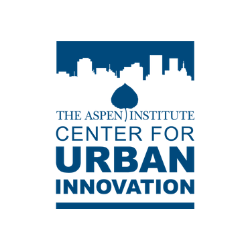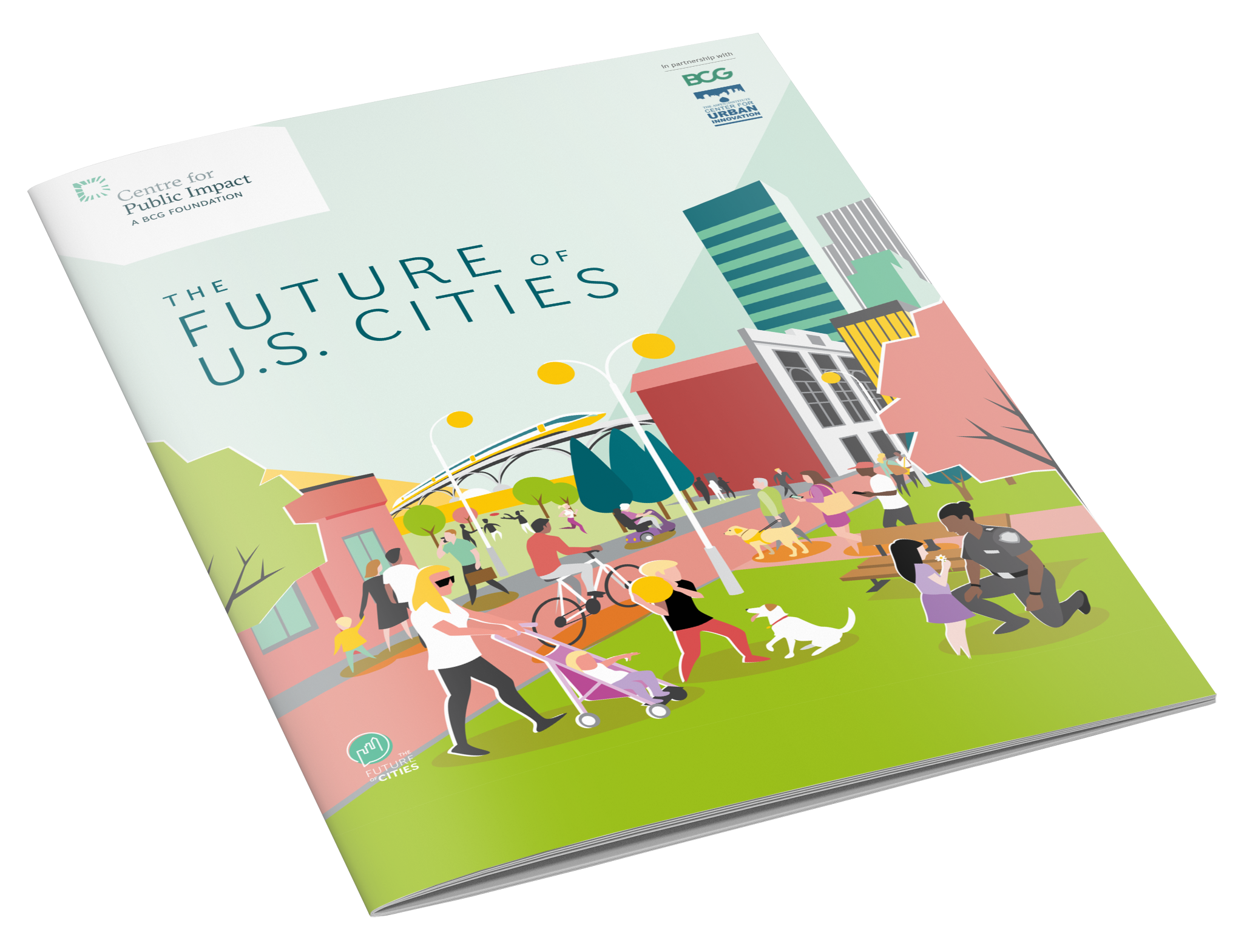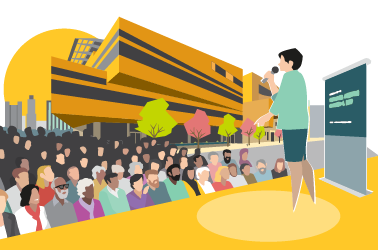
Americans in Transit: Unlocking the power of the city’s mobility ecosystem


How Cities are Innovating with Intention to Achieve Impact
In partnership with


U.S. cities find themselves at a unique inflection point in history
The challenges facing cities are more complex than ever. But real momentum for change is building in, and spreading across, U.S. cities. Across the country, city-problem solvers are innovating with intention to tackle problems and create more legitimate, equitable and agile cities for residents.
The Centre for Public Impact, in partnership with The Center for Urban Innovation at The Aspen Institute and the Boston Consulting Group, has created a handbook to tell the stories of city problem solvers all over America, surface the emerging practices from cities, and extract lessons from conversations with those within cities leading the charge.

Download the Future of Cities Handbook
This handbook is for anyone within a city who seeks to innovate with intention to improve outcomes for all residents in their city.

We spoke to over 45 city problem solvers from all over the U.S.
Our conversations illuminated how cities are using innovation and technology to drive impact against the most pressing challenges to achieve better outcomes for residents.
Hear from Melissa Bridges, Performace and Innovation Coordinator, Little Rock, AR, on how cities have the power to drive change for residents.
We heard that to achieve long-term impact, a city’s approach to innovation must be anchored in:
the broad reservoir of support that allows governments to deliver positive outcomes for all
creating the conditions that facilitate equal access to new innovation and technology so that all residents can share in the benefits
the ability to respond quickly to change in order to meet residents’ expectations and capitalize on new opportunities as circumstances shift on the ground
But how are cities doing this?
Three general practices emerged from our conversations with city problem solvers. Cities that are driving impact with innovation Align innovation efforts, Empower all actors in the ecosystem to be able to innovate, and Grow an innovation culture city-wide.

1. Align
Align innovation efforts both within city government and across sectors through bold, mission-driven strategies that target the most important problems for residents.

Case study
San José created a first of its kind, $24 million Digital Inclusion Fund (DIF). Financed by access fees paid by telecommunication companies, the DIF will support programs to expand broadband access and increase digital literacy in the community. San José’s ambitious goal is to bring broadband connectivity and digital skills to 50,000 households over the course of the next decade - and this initiative explicitly earmarks funding to achieve this goal.
Hear from Danielle Dumerer, Chief Information Officer, Chicago, IL, on why it's important to target the issues that are most important to residents.

We have already done all the easy things. How do we mobilize everyone around tackling the hard things? That’s the key to driving change

2. Empower
Empower the entire city ecosystem to tackle public sector problems by including city practitioners, businesses and residents as innovation partners.

Case study
Kansas City, MO ran a 12-week Innovation Partnership Program (IPP) to create a 'Living Lab' - giving entrepreneurs the opportunity to develop, test and demonstrate innovative solutions using city data and infrastructure. The program benefits both the city and the entrepreneurs: the city has the opportunity to test new technology at no cost, and entrepreneurs can develop a valuable use case for their products and services. To date, the city has adopted over half of the solutions it has tested.
Hear from Sly Majid, Chief Services Officer, Austin, Tx, on why enabling residents specifically to be co-drivers of innovation is important

Innovation cannot stand alone, or exist in silos. If it does, it makes innovation one person’s job and not an organizational mandate.

3. Grow
Grow an innovative culture that encourages continuous experimentation, defines performance metrics that reflect residents’ experiences, and designs innovation pathways to achieve impact at scale.

Case study
In 2018, Tulsa, OK launched the CitiVoice Index, a partnership with Gallup that aims to transform its typical approach to measuring impact. It marks a shift from gathering city-centric data on customers’ satisfaction with city services to resident-centric data on the extent to which residents are (or are not) thriving. Nearly 4,500 residents responded to the survey on questions ranging from access to basic needs and services to the strength of civic support in their neighborhood. To define how to measure ‘thriving’, the city formed a working group consisting largely of community leaders outside of city hall. The index has already provided tangible benefits to the city, informing policy developments, city programs, and their broader approach to partnering with local organizations.

It is foolish to think that doing the status quo both protects you from risk, as well as produces any new results. We have to experiment to achieve breakthrough innovation to really affect residents’ lives for the better.
Hear from Grace Simrall, Chief Of Civic Innovation and Technology, Louisville, Ky, on why enabling residents specifically to be co-drivers of innovation is important

We call this innovating with intention.
We believe local government can be the vanguard in creating cities that are more equitable, livable, and resilient. Cities need to align, empower and grow innovation, in a way that is legitimate, equitable and agile, if they are to realize their potential and achieve real impact with innovation.

Cities have the ability to shape their own destiny
This is only the beginning
This handbook is authored by the Centre for Public Impact, in partnership with the Aspen Institute and the Boston Consulting Group.
We have also written up our interviews with some of the city problem-solvers we spoke to, as well as written case studies to highlight how cities around the United States are using innovation to drive change.

We intend to continue these conversations through convenings, follow-up research, and direct support to help cities translate the ideas raised here into action. We want to build networks and collaborate with anyone who feels passionately about the potential of cities. So we invite you to join our discussion online, to tell us what you agree with, what you disagree with, and what else we should consider.
Related insights










Join the conversation
Have a public impact story to share? Get in touch to let us know. We’re looking forward to hearing from you.